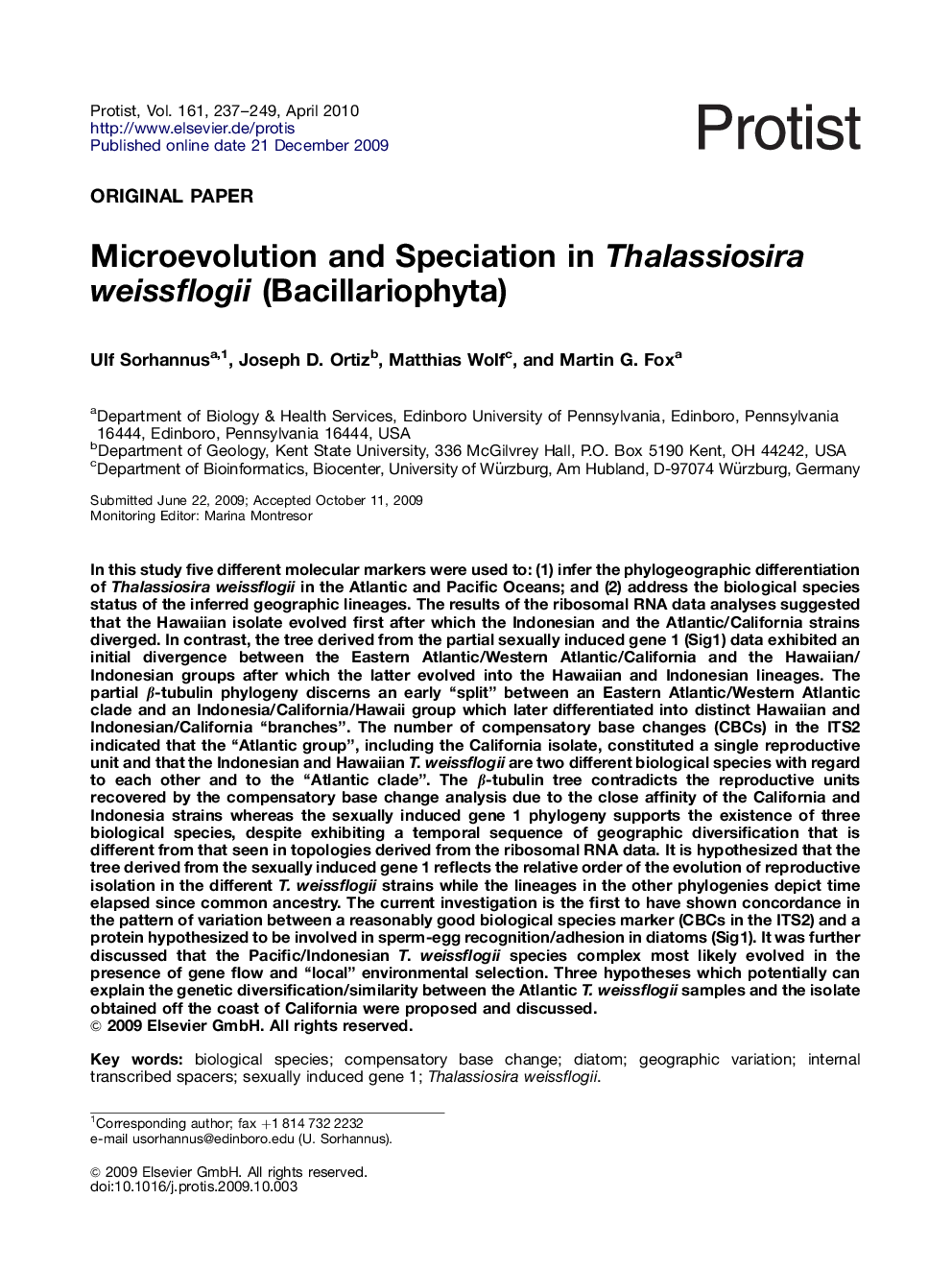| کد مقاله | کد نشریه | سال انتشار | مقاله انگلیسی | نسخه تمام متن |
|---|---|---|---|---|
| 2061836 | 1076535 | 2010 | 13 صفحه PDF | دانلود رایگان |

In this study five different molecular markers were used to: (1) infer the phylogeographic differentiation of Thalassiosira weissflogii in the Atlantic and Pacific Oceans; and (2) address the biological species status of the inferred geographic lineages. The results of the ribosomal RNA data analyses suggested that the Hawaiian isolate evolved first after which the Indonesian and the Atlantic/California strains diverged. In contrast, the tree derived from the partial sexually induced gene 1 (Sig1) data exhibited an initial divergence between the Eastern Atlantic/Western Atlantic/California and the Hawaiian/Indonesian groups after which the latter evolved into the Hawaiian and Indonesian lineages. The partial β-tubulin phylogeny discerns an early “split” between an Eastern Atlantic/Western Atlantic clade and an Indonesia/California/Hawaii group which later differentiated into distinct Hawaiian and Indonesian/California “branches”. The number of compensatory base changes (CBCs) in the ITS2 indicated that the “Atlantic group”, including the California isolate, constituted a single reproductive unit and that the Indonesian and Hawaiian T. weissflogii are two different biological species with regard to each other and to the “Atlantic clade”. The β-tubulin tree contradicts the reproductive units recovered by the compensatory base change analysis due to the close affinity of the California and Indonesia strains whereas the sexually induced gene 1 phylogeny supports the existence of three biological species, despite exhibiting a temporal sequence of geographic diversification that is different from that seen in topologies derived from the ribosomal RNA data. It is hypothesized that the tree derived from the sexually induced gene 1 reflects the relative order of the evolution of reproductive isolation in the different T. weissflogii strains while the lineages in the other phylogenies depict time elapsed since common ancestry. The current investigation is the first to have shown concordance in the pattern of variation between a reasonably good biological species marker (CBCs in the ITS2) and a protein hypothesized to be involved in sperm-egg recognition/adhesion in diatoms (Sig1). It was further discussed that the Pacific/Indonesian T. weissflogii species complex most likely evolved in the presence of gene flow and “local” environmental selection. Three hypotheses which potentially can explain the genetic diversification/similarity between the Atlantic T. weissflogii samples and the isolate obtained off the coast of California were proposed and discussed.
Journal: Protist - Volume 161, Issue 2, April 2010, Pages 237–249